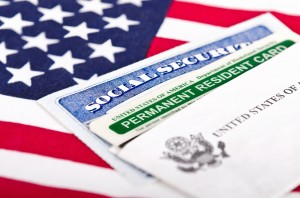Privacy Laws Change For Non-USC and Non-LPR
New York Immigration Lawyer Alena Shautsova
The Trump administration has announced new changes to privacy laws that will affect non US citizens and non permanent residents. Since 2007, the government, and DHS in particular, extended privacy laws protection enjoyed by USC and LPRs to non-immigrants and immigrants (Privacy Policy Guidance Memorandum 2007-01/Privacy Policy Directive 262-12, DHS Privacy Policy Regarding Collection, Use, Retention, and Dissemination of Information on Non-U.S. Persons). Basically, the agency could not release or share information regarding a specific individual freely. It could be done only in specific situations and when a subject of record would provide a release. After new Executive order, the administration is changing its policies to strip non citizens and non LPRs from privacy protection. According to the Memo released on April 27, 2017, “Section 14 of E.O. No. 13,768 requires that “[a]gencies shall, to the extent consistent with applicable law, ensure that their privacy policies exclude persons who are not United States citizens or lawful permanent residents from the protections of the Privacy Act regarding personally identifiable information.” Privacy Policy Guidance Memorandum 2007-01/Privacy Policy Directive 262-12 is inconsistent with Section 14 of E.O. 13,768.”
What does this really mean? If one looks at the Memo in question, he/she will find that its language is rather convoluted and the real meaning is hidden somewhere between the lines.
Analyzing the document as a whole, one can make at lease these two conclusions:
1. No Privacy Act protection means easy exchange of collected data by any and all government participants. Like in a Red Riding Hood, the wolf had big eyes to better see the girl, here, the government opens its volts of data to better see potential deportees.
2. The government will have free hands with regard to collection, use, dissemination, or maintenance of personally identifiable information. The only limitation specified in the DHS Memo is “any sharing of such information outside the agency must be compatible with the purposes for which the information was originally collected.” ” Seeking consent is always a preferable privacy practice, and consent should be sought when practical.” However, it is well known that once information is collected and available, to track the purpose of its usage is extremely hard. It is even harder to prove (for a regular person) that his/her information was mishandled and shared in violation of restrictions. And, I have never heard of a situation where a government official would reach out to a non-immigrant and ask for his/her consent prior to share his info with, let’s say, another consulate…
3. The Memo states that ” People not covered by the Privacy Act or Judicial Redress Act (JRA) (which is non USC or non LPRs) still may obtain access to records consistent with FOIA unless disclosure is prohibited by law or if the agency reasonably foresees that disclosure would harm an interest protected by an exemption.” It is in this line that many practitioners may see a problem: will their clients still be allowed to have copies of the government records pertaining to their full immigration history?
To sum it up, there come significant changes in how the government is going to collect and share information regarding non citizens and non-permanent residents. Perhaps, about citizens and LPRs as well…


